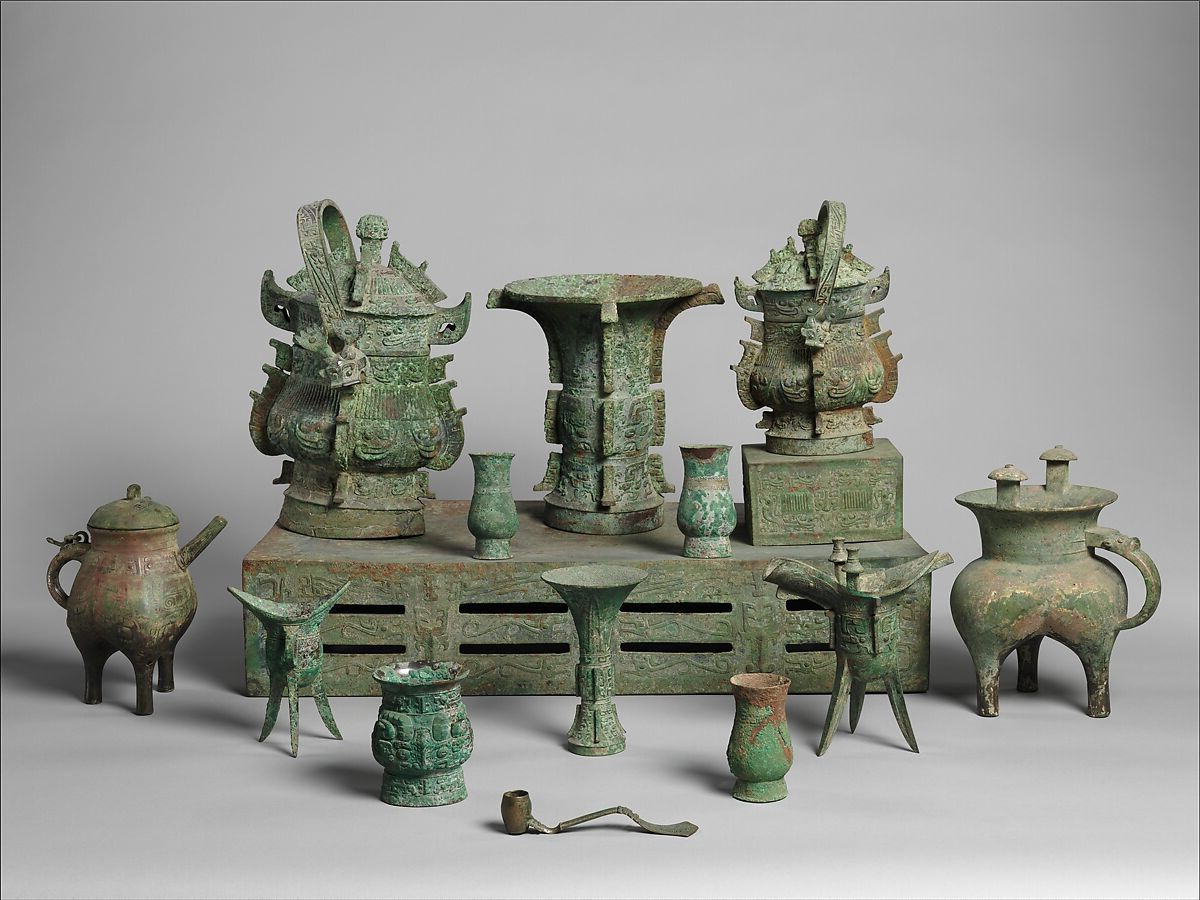
Chinese metallurgy has a rich history that spans thousands of years, showcasing incredible advancements and innovations. Ever wondered how ancient Chinese blacksmiths crafted intricate bronze vessels or why their iron production techniques were so advanced? Chinese metallurgists were pioneers, developing methods that laid the groundwork for modern metalworking. From the creation of cast iron during the Zhou Dynasty to the invention of steel in the Han Dynasty, their contributions were monumental. These ancient techniques not only influenced their own society but also had a lasting impact on global metallurgy. Ready to dive into 45 fascinating facts about this ancient craft? Let's explore the wonders of Chinese metallurgy and its enduring legacy.
Key Takeaways:
- Ancient Chinese metallurgy dates back thousands of years, with innovations in bronze, iron, and steel shaping warfare, culture, and daily life. Their techniques influenced global metalworking traditions and continue to impact modern industry.
- Chinese metallurgy not only revolutionized warfare and daily life, but also influenced neighboring cultures and civilizations. Today, China remains a global leader in metal production, with a rich history that continues to inspire innovation and creativity.
Ancient Beginnings
Chinese metallurgy has a rich history that dates back thousands of years. The ancient Chinese were pioneers in metalworking, creating tools, weapons, and artifacts that have stood the test of time. Here are some fascinating facts about the early days of Chinese metallurgy.
- The earliest evidence of metalworking in China dates back to around 3000 BCE.
- Bronze was the first metal to be widely used in ancient China, marking the beginning of the Bronze Age around 2000 BCE.
- The Erlitou culture (1900-1500 BCE) is considered one of the earliest Chinese cultures to produce bronze artifacts.
- Shang Dynasty (1600-1046 BCE) is known for its advanced bronze casting techniques, producing intricate ritual vessels.
- The Chinese developed a unique piece-mold casting method for bronze, different from the lost-wax method used elsewhere.
Innovations in Iron and Steel
As time progressed, Chinese metallurgists began to experiment with iron and steel, leading to significant advancements. These innovations had a profound impact on Chinese society and beyond.
- The Chinese began using iron around 600 BCE, during the late Zhou Dynasty.
- Cast iron was first produced in China around 500 BCE, centuries before it appeared in Europe.
- The Han Dynasty (206 BCE-220 CE) saw the development of high-quality steel through techniques like quenching and tempering.
- The Chinese were the first to create wrought iron by removing carbon from cast iron.
- Blast furnaces, capable of producing large quantities of cast iron, were invented in China during the Han Dynasty.
Metallurgy in Warfare
Metallurgy played a crucial role in Chinese military history. The development of stronger and more durable metals led to the creation of superior weapons and armor.
- The famous Terracotta Army, dating back to 210 BCE, includes weapons made from bronze and iron.
- The crossbow, a revolutionary weapon in ancient China, often featured bronze components.
- During the Warring States period (475-221 BCE), iron swords became more common, replacing bronze ones.
- The Han Dynasty saw the introduction of steel armor, providing better protection for soldiers.
- Chinese metallurgists developed advanced techniques for making arrowheads, spearheads, and other weapons.
Cultural Significance
Metallurgy was not just about practical applications; it also held cultural and symbolic importance in Chinese society. Many metal artifacts were created for religious and ceremonial purposes.
- Bronze vessels were used in rituals to honor ancestors and deities during the Shang and Zhou Dynasties.
- The intricate designs on bronze artifacts often depicted mythical creatures and scenes from Chinese mythology.
- Gold and silver were used to create elaborate jewelry and ornaments for the elite.
- The Chinese believed that certain metals had protective and healing properties.
- Metal mirrors, often made of bronze, were considered symbols of power and status.
Technological Advancements
Chinese metallurgists were constantly innovating, leading to numerous technological advancements that influenced other cultures and civilizations.
- The invention of the blast furnace allowed for the mass production of cast iron.
- The Chinese developed the first known method for creating steel by carburizing iron.
- Hydraulic-powered bellows were used to increase the temperature of furnaces, improving metal quality.
- The use of coal as a fuel source in metallurgy was pioneered in China.
- The Chinese were the first to use chromium to coat weapons and armor, preventing rust.
Metallurgy in Daily Life
Metals were not only used for warfare and rituals but also played a significant role in everyday life. From tools to household items, metallurgy improved the quality of life for many.
- Iron plows, introduced during the Han Dynasty, revolutionized agriculture.
- Metal coins, first made of bronze and later of iron, facilitated trade and commerce.
- Bronze and iron tools, such as axes and chisels, were essential for construction and craftsmanship.
- Metal cooking utensils, like pots and pans, became common in Chinese households.
- The Chinese created intricate metal locks and keys for securing valuables.
Influence on Other Cultures
Chinese metallurgical techniques and innovations had a far-reaching impact, influencing neighboring cultures and civilizations.
- The Silk Road facilitated the exchange of metallurgical knowledge between China and other regions.
- Chinese cast iron technology spread to Korea and Japan, leading to advancements in their own metallurgical practices.
- The use of steel in weaponry influenced the development of samurai swords in Japan.
- Chinese metallurgical techniques were introduced to the Islamic world, impacting their metalworking traditions.
- European travelers and traders brought Chinese metallurgical knowledge back to the West, contributing to the development of European metallurgy.
Modern Metallurgy
Chinese metallurgy continues to evolve, with modern advancements building on ancient techniques. Today, China is a global leader in metal production and innovation.
- China is the world's largest producer of steel, accounting for over half of global production.
- Modern Chinese metallurgists use advanced technologies like computer modeling and automation.
- The Chinese government invests heavily in research and development for new metallurgical processes.
- China is a major player in the production of rare earth metals, essential for modern electronics.
- Chinese companies are at the forefront of developing sustainable and environmentally friendly metallurgical practices.
Fun Facts
Here are some additional fun and interesting facts about Chinese metallurgy that highlight its unique aspects and contributions.
- The Chinese character for "metal" (金) is also used to represent money and wealth.
- Ancient Chinese metallurgists often worked in secret, passing down their knowledge through apprenticeships.
- Some ancient Chinese bronze artifacts contain inscriptions that provide insights into historical events and practices.
- The famous "Iron Pagoda" in Kaifeng, built in 1049 CE, is made entirely of cast iron.
- Chinese metallurgy has inspired countless works of art, literature, and cinema, celebrating its rich history and achievements.
The Legacy of Chinese Metallurgy
Chinese metallurgy has shaped history in countless ways. From the invention of cast iron to the creation of intricate bronze artifacts, these advancements laid the groundwork for modern metalworking. Ancient Chinese metallurgists were pioneers, developing techniques that influenced cultures worldwide. Their innovations in smelting, alloying, and casting not only boosted their own civilization but also set the stage for future technological progress.
Understanding these contributions helps us appreciate the ingenuity and resourcefulness of ancient Chinese society. It’s fascinating to see how their work continues to impact our lives today, from everyday tools to complex machinery. The legacy of Chinese metallurgy is a testament to human creativity and the relentless pursuit of knowledge. So next time you use a metal object, remember the ancient craftsmen who made it all possible. Their legacy lives on in every piece of metal we touch.
Frequently Asked Questions
Was this page helpful?
Our commitment to delivering trustworthy and engaging content is at the heart of what we do. Each fact on our site is contributed by real users like you, bringing a wealth of diverse insights and information. To ensure the highest standards of accuracy and reliability, our dedicated editors meticulously review each submission. This process guarantees that the facts we share are not only fascinating but also credible. Trust in our commitment to quality and authenticity as you explore and learn with us.


